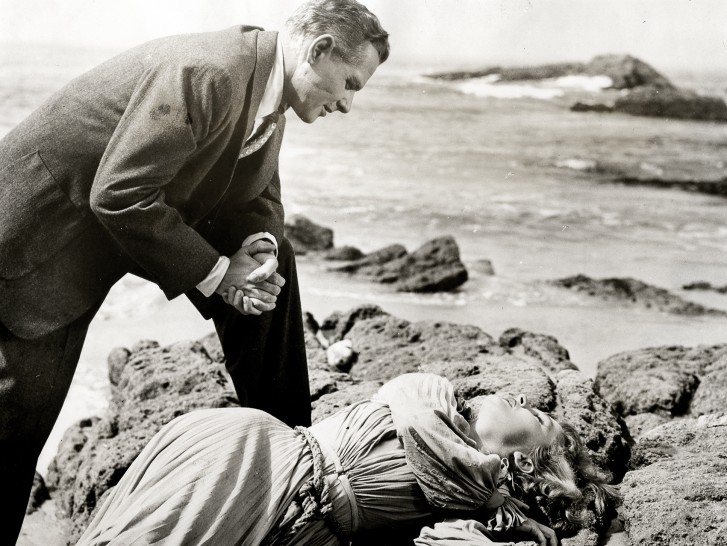
My Name is Julia Ross
So Dark the Night
B-film maverick Joseph H. Lewis delivered a low-rent yet brilliantly stylized reply to Rebecca and Gaslight starring a sensitive Nina Foch, in her debut role, as a young woman abducted to a seaside mansion to play the role of an already dead woman and victim of a sinister scheme. With George Macready as a knife-wielding psychotic man-child and Dame May Whitty as his coddling elderly mother, My Name is Julia Ross releases the Gothic spirits of the Forties woman-trapped-in-an-old-house cycle into a brisk thriller animated by comically irreverent touches. True to its boldly assertive title, My Name is Julia Ross flaunts the rich potential of the B-film to act as a revealingly distorting mirror of the more predictable big-budgeted A-films. Indeed, scenes of Foch pulling apart the wall panels and staircases to discover secret passages seem to subversively celebrate the threadbare sets of Lewis’ low-budget production. An unexpected breakout hit, the film was so popular it was elevated by Columbia to an A-feature and moved to the prestigious top half of double bills.
One of the great delights of the B-film is that rare chance to see a favorite character actor elevated to a starring role, like menacing tough guy Charles McGraw’s transformation into a bulletproof cop in Armored Car Robbery, or Hungarian émigré Steven Geray, the suave maître d’ and waiter in countless pictures, now cast as a Parisian detective whose engagement to a small-town innkeeper’s daughter is shattered by her gruesome murder. Determined to catch the killer, Geray embarks on a strange and twisting path, interrogating subjects while his criminal prey remains always one step away. In this stylish follow-up to his breakthrough hit, the Gothic plot-twister My Name is Julia Ross, Joseph H. Lewis makes clear his wild talent for the unexpected stories and bold mise-en-scène that give his films the giddy intensity so beloved by true cinephiles. Regularly rediscovered as a cult classic, So Dark the Night drew the attention of Columbia executives who began to unsuccessfully groom Lewis for bigger-budget assignments that he would steadfastly resist out of reluctance to surrender the creative freedom he found on the lower rungs of the hierarchical studio ladder.
Image courtesy Collection Austrian Film Museum





































